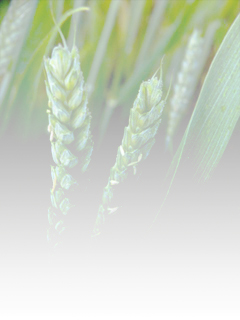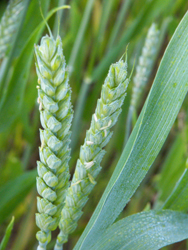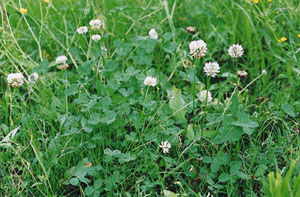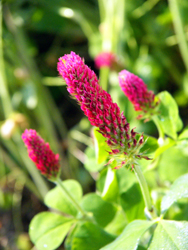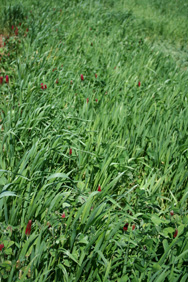Evaluating Green Manures for Organic Systems
(Rogers, Broughton, Smith and Wszelaki) |
||
Green manure is a type of cover crop grown primarily to build up and maintain soil organic matter and soil nutrients. Green manure crops are often grown for a specific period, and then plowed under and incorporated into the soil before the planting of a cash crop. We are evaluating the performance of different green manures across three planting dates (mid-September, mid-October and mid-November). Five grains and five legumes comprise the crops used to create 35 treatment combinations (each crop evaluated individually and with a companion grain/legume) that will be evaluated based on biomass production, weed suppression and soil nutrient availability.
The crops being studied are: Grains Winter wheat Potential benefits: erosion control, weed suppressor, nutrient catch crop, "cash and cover" crop, soil builder and organic matter source Winter oats Potential benefits: affordable biomass, smother crop, nutrient catch crop, Fall legume nurse crop, Spring green manure or companion crop Triticale Potential benefits: erosion control, nutrient catch crop, affordable biomass, good companion crop, organic matter source Winter rye Potential benefits: erosion control, fits many rotations, nutrient catch crop, weed and pest suppressor, organic matter source, companion crop/legume mixtures Barley Potential benefits: erosion control, weed and pest suppressor, nutrient recycler, nurse crop, organic matter source |
|
We are investigating cover crop mixtures or companion crops, as combining crops can provide more benefits than planting an individual cover crop by itself. Mixtures can: 1) provide insurance that at least one crop will be successful; 2) serve as nurse crops, meaning that one crop can help the other crop to become better established; 3) act synergistically, for example, in legume/grain mixes, the grain can help retain (trap) the nitrogen fixed by the legumes and the nitrogen fixed by the legumes increases the grain biomass; and 4) maximize biodiversity, since each crop supports and alters the microbial biodiversity in its own way.
Legumes Austrian winter pea Potential benefits: affordable biomass, nitrogen source, rotational effects, low water user, rapidly growing, forage booster, long-term bloomer, chill tolerant Hairy vetch Potential benefits: nitrogen source, soil conditioner, early weed suppressor, good grain companion, low water user, phosphorous scavenger, widely adapted Ladino white clover Potential benefits: nitrogen source, tolerates field traffic, excellent living mulch, value-added forage, soil protector, good companion crop Red clover Potential benefits: nitrogen source, widely adapted, soil conditioner, provides beneficial habitat Crimson clover Potential benefits: nitrogen source, affordable biomass, good companion crop, provides benefical habitat and nectar, nutrient cycler |


